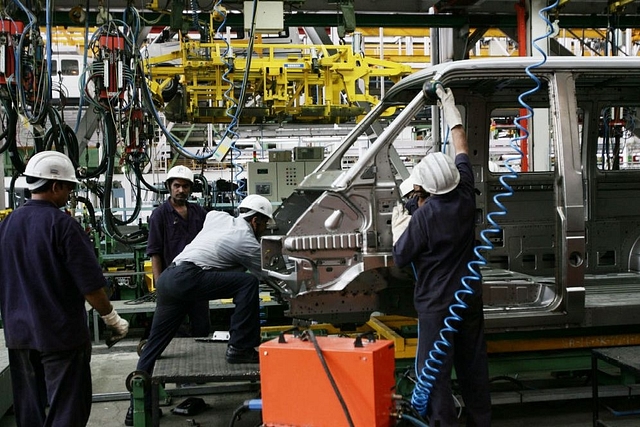
Advisory Group To Commerce And Industry Ministry Has Some Bold Suggestions, But Then, India Didn’t Give Modi ‘303’ To Be Timid
The HLAG report may be bold but if there is one government that can undertake these measures then it is the Modi government.
The 303 mandate calls for bolder and tougher reforms than what was experienced in Modi 1.0.
The High-Level Advisory Group (HLAG) constituted by Commerce and Industry Ministry has released its report, and a glance through it makes one thing clear — that it is bold. There are many recommendations in the report that need a detailed discussion and, I will discuss them in subsequent articles.
The focus of this article is more immediate to some of the big reforms that have been discussed in the report and whether they can be implemented given several reports that have been submitted in the past. The answer to this question does lie in the change in India’s political economy.
For the first time, in history of India we saw a reformist government getting re-elected to power and that too with a bigger mandate. The mandate of 303 is indeed a mandate for even more bold and tough reforms than what were experienced in Modi 1.0.
In fact, it is for the first time in 48 years that a government has managed to be re-elected with a full majority. These factors suggest that Indians in general have started to vote for reforms and therefore, for the first time in nearly five decades we have a government with the necessary political capital to undertake them.
In economics, especially in mathematical optimisation problems, we often talk about the necessary and sufficient conditions.
Political capital is a necessary condition for some of these reforms as without it, government will be unable to push a reformist agenda.
In the context of India, we didn’t meet this necessary condition and therefore, a bulk of our big bang reforms were induced by a situation of economic urgency, such as the 1991 reforms. Other reforms did happen, but they were not bold enough to dramatically undo the socialist production system and its complementing mindset within the government.
Now that the necessary condition is met, it is interesting to ask whether it is sufficient for the recommendations to be adopted?
In the context of HLAG, the answer is yes, and this is manifested in the fact that one of its most bold recommendations with respect to reducing the corporate income tax rates has already been accepted.
This shows the seriousness of the reform agenda of Modi 2.0 and therefore, this is not just another report on exports, but it is very likely a policy roadmap for future.
Over the years I have read many reports and some of them have indeed looked at India’s export potential while highlighting policy interventions that will help attain that potential.
However, this report is different in the sense that it provides both micro and macro reforms that are important for the Indian economy. In that sense, it provides a very comprehensive and coherent policy vision as it focuses on a few sectors where India has the potential to emerge as a major player.
The HLAG report also highlights the importance for free trade agreements (FTAs) and it advocates for entering RCEP (Regional Comprehensive Economic Partnership).
Indeed, there may be concerns with respect to entering into an agreement with China. However, the alternative is to not be a part of the trading block which may leave us worse off.
Further, the report uses a study by National Council of Applied Economic Research (NCAER) and shows through simulations that increasing our import tariffs during the ongoing trade war is not the best possible response.
It may be mentioned that in an earlier joint article with Dr Srinivas Thiruvadanthai, we had argued for a need to liberalise our economy and enter into FTAs in order to revive our manufacturing sector.
Similarly, in another joint article with Sanya Sharma we had shown the positive impact of FTAs on the Indian economy.
By now there is adequate evidence that suggests the need to move back to the trend of reducing our import tariffs. Cheaper inputs are critical for value addition in the economy and therefore our tariff policy must reflect the understanding of global value chains.
The two most urgent interventions recommended in the HLAG report are with respect to the cost of capital. India indeed has one of the highest real interest rates in the world. Therefore, there is a need to bring down our real interest rates to a level similar to other developing economies.
One does hope that the Monetary Policy Committee of Reserve Bank of India will take stock of the current output gap in our economy and factor it in while announcing its next rate cut in December — but then again, we hoped for the same in August and October, only to be disappointed.
The other recommendation is to do with the small savings rates and to link them with repo rates to ensure smooth transmission.
This is important as it will ensure commercial banks can lower their deposit rates which will reduce the cost of deposits allowing them to reduce cost of capital. It is about time we bite this silver bullet.
There are many big-bang reform ideas that are a part of this 309-page report, and one will examine them specifically over a series of articles.
While the report may be bold but if there is any government that can take these measures then it is the Narendra Modi government. Therefore, one is optimistic that this time, it will be different.